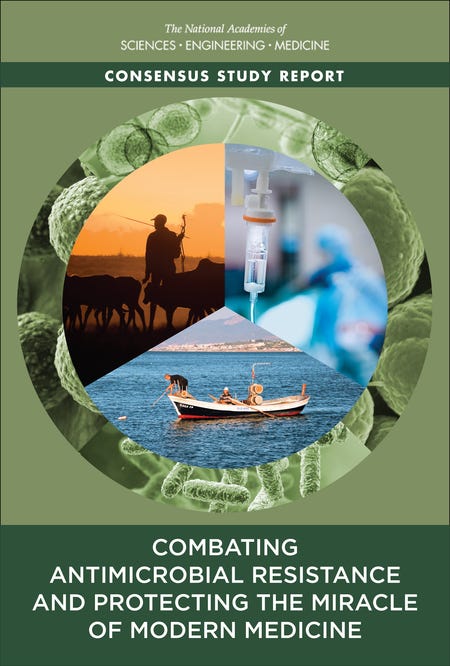The Health Strategist
Chief Editor — Joaquim Cardoso, MSc
October 24, 2021
This is an excerpt from the report below, focusing on the Human and Business Case of AMR.
Combating Antimicrobial Resistance and Protecting the Miracle of Modern Medicine
National Academies of Sciences, Engineering, and Medicine.
Buckley GJ, Palmer GH, editors.
Washington, DC: The National Academies Press; 2021.
https://doi.org/10.17226/26350
The Health and Economic Burden of Resistance
In response to the charge to examine the long-term health and economic effects of antimicrobial resistance, the committee reviewed a cross-section of recent literature.
First was the Centers for Disease Control and Prevention’s (CDC’s) Antibiotic Resistant Threats in the United States 2019, which drew on population surveillance and research from electronic medical records to estimate that
- every year 2.8 million resistant infections in the United States cause 35,900 deaths,
- with Clostridioides difficile infection killing another 12,800 people.
The CDC report also attempted to put some economic parameters on the problem,
- estimating the direct costs of treating six, common, multidrug-resistant pathogens at $4.6 billion a year,
- with C. difficile adding another $1 billion and
- drug-resistant gonorrhea adding another $133.4 million.
The Organisation for Economic Co-operation and Development (OECD) Health Committee, in collaboration with the European Centre for Disease Prevention and Control, has also given considerable attention to estimating the future health and economic burden of antimicrobial-resistant infections.
Their reports estimate that
- the United States and Europe together account for about 60,000 deaths a year from resistant infections,
- with 1.75 million years of healthy life lost every year across 33 of the OECD countries.
- The same infections could cost the health systems of these countries about $3.5 billion a year.
There are challenges in measuring morbidity and mortality associated with resistant infections.
Most outcomes research is limited to readily observable, short-term clinical outcomes (e.g., deaths, number of days hospitalized).
The downstream consequences of resistant pathogens are harder to predict. Without effective alternatives and enhanced infection control, removal of antimicrobials from animal agriculture could increase animal disease burden and mortality, leading to compromised animal welfare and productivity losses, with potential downstream effects on food security and livelihoods.
Better estimates of the burden of antimicrobial resistance in humans and animals depend on better microbiological data and more clarity on the appropriate design of epidemiological research.
There are also challenges related to the complex adaptive nature of the problem. The same resistant infection can have drastically different consequences in humans and animals, depending on whether it is acquired in hospital or outside of it, in a high-income country or a low-income one.
What are the recommendations of the report?
To learn more about the recommendations of the report, access the original publication, please!
ORIGINAL PUBLICATION

Login | The National Academies Press
Returning Users-Log in to MyNAP Create a Free MyNAP Account ” Browse as Guest ” MyNAP members enjoy free access to…www.nap.edu












